The Character of Cricket Read online
Page 16
There has been some rowdyism in recent years, for which there are several explanations: a lot of one-day success; an excess of scrumpy; no local league soccer as an alternative. As a result there are fierce signs up saying that the club reserves the right to remove anyone from the ground – member or not – if he doesn’t comply with the rules. That includes using obscene language. And they also ‘reserve the right to search persons entering the ground and to confiscate any intoxicating liquor found.’
I sat on a wooden bench by a bar which I think, though I may be mistaken, was reserved for the use of vice-presidents, and drank a pint of Dry Blackthorn Cider matured hard by in Norton Fitzwarren. It was too quiet a day to have my drink confiscated. A fly landed in the cider and drowned at once. A woman in a blue sweater asked, amazingly, if Somerset had ever come bottom of the championship before. Another spectator said, ‘Not since Brian Close was here.’ I stifled an urge to tell them about the early fifties, and the woman went to sleep in a deck chair.
Out on the square the umpires and captains were peering at the turf and scuffing their shoes about. I walked out on to the pitch to have a look for myself and was joined by a vice-president of the club, a structural engineer from a village near Yeovil. He played a lot of village cricket. If it had been us, we agreed, we would have played. ‘My old aunt used to say,’ he said, ‘“If you can see the Quantocks it means rain, and if you can’t see them then it’s raining already.’” I said I’d had an old aunt in Creech St Michael and that was the sort of thing I would expect her to say too. She was a very keen cricket supporter. ‘What niggles me,’ said my friend, who was resigned to having taken a day off without play, ‘is that it costs forty-three pounds a year to be a vice-president.’ He didn’t think the players and umpires remembered that often enough.
Since 1882 Somerset have played more than five hundred matches on this ground. After a hundred and two years the record was: Won 133, Drawn 187, Lost 199, Tied l, Abandoned 3. That’s not such a bad record, and yet Somerset, I feel, has less to do with facts and figures than any other county. The inevitable Crusoe wrote: ‘In the long view it is not the arithmetical performances of this or that player, not merely the times of success and failure that strike the historian of Somerset cricket. It is rather the spirit – the spirit which win or lose has always been a happy compound of humour and independence.’
I have an uneasy feeling that perhaps that is not quite as true as it was and that too much showbiz and success has not altogether improved the character of Somerset cricket. Even so, and whatever the changes, I can never visit the Taunton ground without remembering the original Berry bus and Randall Hoyle in his Hawks tie and my aunts and Harold Gimblett and Bill Alley and the unfortunately named fast bowler Lobb and, most of all, the day I went with Christopher Hollis and we got that first marvellous glimpse of Botham batting.
But I do regret not seeing Woods. On one occasion he took all ten wickets after a huge breakfast of lobsters and beer; three times he hit a hundred before lunch; and he won that great match after Somerset had been given first-class status in 1891. It was against Surrey. And it was at Taunton. Woods was due to bowl the last ball of the match at the Surrey number eleven, Sharpe. Just before he bowled, the other batsman said to Sammy: ‘Keeps his end up well for a man with one eye, eh?’ Woods asked which one and, on being told the left, bowled ‘my first round-arm ball of my life, and hit his off-stump.’
‘Had I not had the information,’ he said, ‘we wouldn’t have won.’ He considered this was the day that ‘made’ Somerset cricket. ‘Our spectators went barmy,’ he said, ‘flung their hats in the air and hit each other about.’
Taunton’s ghosts are the most genial I can think of; and they and my own personal links and memories mean that I shall always carp at the changes but always forgive. Whatever they do to it; whether or not there are trendy boys in the executive boxes, or the Quantocks are visible, or the players are as merry as they used to be, it will always be a special place, especially for those who like the idea of flinging their hats in the air and hitting each other about.
The Oval
Life is maddeningly full of either/ors. You can’t be Oxford and Cambridge. You have to be either Everton or Liverpool. Sitting on the fence is Laodicean. ‘So then,’ as the Book of Revelation has it, ‘because thou art lukewarm and neither cold nor hot, I will spue thee out of my mouth.’ I feel like this about Lord’s and the Oval. For a Londoner, at least, impartiality is not possible. Years ago I used to have coaching at Alf Gover’s indoor school in Clapham; I now seem to have a Surrey postal address; I grew up in the years of the Surrey and Surridge ascendancy, when Bedser and Loader, Lock and Laker, May and Barrington and Subba Row carried all before them; but still I remain dubious about the county and its famous cricketing home.
Of course this is perverse. Gordon Ross, in his excellent little essay which Surrey use as their ‘standard hand-out’, demonstrates that Surrey cricket has a long and glorious history, though not always at the Oval. The first mention of Surrey cricket is actually at their second, barely used, home in Guildford. That was in 1598. In 1700 they were playing ‘Ten Gentlemen on each side’ on Clapham Common and for ten pounds a head each game. And Moulsey Hurst in Surrey was the scene of the first recorded leg before wicket. Surrey were playing ‘Thirteen of England’ and the Hon. J. Tufton was lbw to Wells.
The club was formally inaugurated on 18 October 1845 at the Horns Tavern in Kennington. The motion ‘That a Surrey Club be now formed’ was passed, according to Gordon Ross, ‘amidst universal cheering’ from the hundred or so club cricketers present. Kennington Oval was then a market garden surrounded by a hedge, and it was owned – as it still is – by the Duchy of Cornwall (hence Surrey’s cap badge of Prince of Wales feathers and Prince of Wales ‘Ich Dien’ motto). The Duchy were quite happy for it to be turned over to a different use. The original lease was for thirty-one years at a hundred and twenty pounds per annum. The first of ten thousand turfs from Tooting was laid by Mr Turtle, who charged three hundred pounds. Nowadays the Duchy still profess to be keen that cricket should be played on their land for ever and a day. Yet they manifest their enthusiasm in a curious manner. The last lease was for thirty-four years. The new one, awaiting final signature at the time of writing, is for fifteen years. I think the Duke of Cornwall, aka the Prince of Wales, should put his mouth where his feathers are and give the club a thousand-year lease on a peppercorn rent. But then cricket was never really his game.
There have been stirring deeds there since 1845. The first Test match in England; the first loss of the Ashes; the immortal rearguard action of Hirst and Rhodes, when Hirst said, ‘Wilfred, we’ll get ’em in singles’; Hobbs’s and Bradman’s final Test innings; Hutton’s 364 out of England’s 903 for seven in 1938. Because it is the traditional venue of the final Test in every series, it tends to have a crucial significance, which Lord’s with its second Test somehow lacks. Nor has its history been just cricket. The first FA Cup Final was played at the Oval between, wait for it, ‘The Wanderers’ and the Royal Engineers. The winter before last it was the scene of the deciding fixture in the series between the British and American ladies’ lacrosse teams. And during the war it was supposed to be a POW camp, although it never held prisoners.
Neville Cardus has a famous story of the eve of the Second World War in the Long Room at Lord’s when workmen came and took away the bust of W.G. It was then that Cardus realised things were getting serious. When I mentioned that story in a Times book review, I was sent a note by a Dr Philip Evans who was working at King’s College Hospital in 1939. He had been in the States for two years and could not believe that war was a genuine possibility. Every day he went to work on the tram past the Oval. ‘About three days before Chamberlain declared war I was looking from the upper deck down on the sacred turf of the Oval,’ he told me, ‘and I saw that two wide discs of it had been dug up for gun emplacements. I knew then that war was inevitable.’ So the Oval is hallowed ground.
<
br /> Despite this, I don’t, if we are going to be absolutely honest, much care for the gasholders. Their correct corporate designation is ‘The Kennington Holder Station’ and they come under the aegis of the British Gas Corporation South Eastern Region. They have now fallen victim to the contemporary craze of advertising on every available public surface and have ‘WONDERFUEL’ in huge lettering on the side where the television cameras can pick them up. If you have only seen the ground on television you will be unprepared for the way those four great cylinders crowd and dominate the place. They are like creatures of H. G. Wells or John Wyndham, monsters about to devour the poor little Cricketers public house which crouches beneath them. Despite its name, the Cricketers is more of a music than a sporting pub. Indeed it says it is ‘London’s Premier Jazz House’. When I was there they were expecting all the best acts: Georgie Fame, George Melly, Hershey and the Twelve Bars, Eddie and the Hot Rods, even Juice on the Loose.
Apart from the gasholders and the pub, the main landmark is Archbishop Tenison’s grammar school, endowed in 1685 but showing no evidence of seventeenth-century design. There is also a Church of England School, St Mark’s, at the Vauxhall end. The perimeter, patrolled according to the warnings by Centuryon Guard Dogs, is surrounded by roads, one a main bus route, the other lazily residential. The residences are flats – most, if not all, owned by the GLC. They look characterless and rather mean.
Despite these frankly tacky South London environs Surrey cricket has just as often been characterised by elegance as obduracy. For every Roundhead Barrington there was a Cavalier May. Lord Dalmeny scored two centuries for them before the Great War. Percy Fender, who hit a hundred in 35 minutes, was obviously a player and captain of startling panache. In the Centenary Library, opened in 1980 by two non-Surrey men, Bobby Simpson and Colin Cowdrey, you can still see Fender’s cap. It is under glass, next to the cigar case given to H.D.G. Leveson Gower by Mr ‘Buns’ Cartwright (an improbable souvenir).
Above all, of course, Surrey had Hobbs. Their gates are named after him – a fair tribute to a man who made more appearances and scored more runs for Surrey than anyone. He hit 144 Surrey centuries in all, and downstairs, close to Fender’s cap and Leveson Gower’s cigar case, is one of his bats. It has ‘Old Style Handle’ embossed on the blade just below the splice and underneath the Master has written, in wonderfully neat forward-sloping black not quite copperplate: ‘I scored 37 and 100 with this bat in fifth “Test” match against Australia at Kennington Oval – August 1926. J.B. Hobbs.’ Note the ‘Kennington’ and the inverted commas around Test.
When I took the family to see Somerset play the home team in a John Player League game they ran out of sandwiches. We got the last two and split them six ways. Also, foolishly, we sat just over the midwicket boundary, a silly place to be sitting when Botham and Richards are vying with each other in a race to see who can score most sixes. Balls to the right of us, balls to the left of us, balls in front of us, volley’d and thunder’d. Despite their new Trinidadian fast bowler, a Joel Garner clone called Tony Gray, the Surrey attack looked pretty plain. Under those circumstances, mind you, Bedser, Loader, Laker and Lock would be pressed to look penetrating. It reminded me of prep school, fielding at square leg when our bowlers were pitching short – the terrible realisation that you are a sitting target.
Immediately underneath us the long-suffering fielder, smiling ruefully under his chocolate brown Surrey cap, was David Ward, who earlier in the season scored a maiden hundred against Derby in a shade over two hours after being called up unexpectedly one lunchtime. He made 143 with seventeen fours, substituting for Trevor Jesty. Bucktoothed and vulnerable, Ward looked as apprehensive as the rest of us.
When you say, diffidently, to the Surrey secretary Ian Scott-Browne that the Oval isn’t all it might be, he is apt to disarm the criticisms with even fiercer ones of his own. The umpires’ changing-room, for instance. ‘It’s a disgrace,’ he says. ‘We hope to do something about it in the very near future.’ The loos at the Vauxhall End. Indeed the whole of the Vauxhall end. Well yes, he will concede, the loos are a disgrace too and the stands aren’t a lot better, but there’s a million pounds in the kitty thanks to the appeal for the Kenny Barrington sports centre and, ‘given a fair wind’, it will be built in the winter of 1986-87.
The trouble is that with a big old ground like the Oval the money gets eaten up in invisible improvements. They recently spent £28,000 on rewiring. The members couldn’t see the new wires, of course, but if it hadn’t been done there would have been a fire risk. The pavilion is a good building, sturdily constructed, but it is a hundred years old and sometimes the roof springs a leak and the plumbing gives out. Smaller county grounds don’t have such enormous overheads.
By rights the ground really shouldn’t be there. Despite the grottiness of the immediate surroundings it is only a stroll from Parliament and the Tate Gallery, not much further from the City of London. Those 9.8 acres must be worth millions to a property developer. And nowadays Kennington is about six miles from the nearest part of Surrey. ‘I suppose you could say we’re the South London Cricket Club,’ says Scott-Browne, a touch morosely. About a dozen years ago the club contemplated moving out into the county proper, just as Essex did from Leyton, their East London ground. The idea never came to anything, however, and apart from four days’ play at Guildford every year the First XI play all their games in London. The colts and seconds carry the banner around the county proper, but their elders and betters remain where they always have done.
They like to claim that the Oval is a very friendly place, which I take to be a discreet swipe at Lord’s. The crude characterisation would have it that Lord’s is north of the river, toffee-nosed and stand-offish, while the Oval is full of ‘real people’, calling spades spades and being sunny and welcoming to all and sundry. Or, as the author and Surrey enthusiast Richard Gordon puts it, ‘Lord’s is the cathedral of cricket, the Oval low church.’ There is some truth in this. That Somerset Sunday I was wandering past the practice net, jammed in between the perimeter wall (there’s half a mile of it – another thankless expense) and the stands at the Vauxhall end, when a voice called out a decently respectful ‘Good afternoon, Mr Heald.’ It was Greg, the captain of my son’s school Under-13 side. And as a result my son, Alexander, spent part of the afternoon bowling in the nets at the Oval. I doubt that could happen at Lord’s. He has bowled in the nets there as well, but by appointment. If you measure friendliness by informality then, yes, the Oval is certainly a friendly place.
‘Surrey cricket,’ wrote Cardus, ‘from days historical, has been one of the major nurseries of the England XI. What a roll of honour could be composed to hang on the wall of the pavilion at the Oval: the Reads, Shuter, Lohmann, Abel, Brockwell, Richardson, Lockwood, Hayward, Crawford, Hobbs, Strudwick, Sandham, Fender, Jardine, May, Bedser... the list could go on much longer, and I hope no reader will take me to task for important omissions.
‘I fancy that, to this illustrious succession of names, will one day (and not in the far distant future) be added those of Barrington and Stewart. Both are batsmen capable of going a long way in the best company.’
The sage was writing in 1955. Right about Barrington, marginally less so about Stewart. Even so, Stewart scored more runs for Surrey (over 25,000), was captain from 1963-72, and is now the county’s cricket manager. But no one would put him in the same class as Barrington. John Edrich, perhaps. He scored more runs for Surrey than anyone but Hobbs, Hayward and Sandham. But then Graham Roope scored more runs for Surrey than Peter May, and we are not going to claim, are we, that Roope was a better batsman than May? No we are not.
Difficult, sadly, to put many of the present team in that category. Butcher? Always attractive to watch but... Against Somerset he flattered but only to deceive. Tony Gray looks like the new Garner but he is Trinidad and West Indies, not a native ‘transpontine’. Perhaps Medlycott, young cricketer of the year in 1983, will come good, but in 1985 he only played one champ
ionship match. He scored five. Of them all Monte Lynch, still barred from consideration by England, looks the likeliest. Only he responded that afternoon to the challenge of Richards and Botham. He too hit sixes and was unafraid. Whenever I have seen him he stands tall and attacks.
Otherwise the present Surrey team seem a bit ordinary – certainly when you compare them with the great teams of the past. Their ground, on the other hand, is legendary. Great deeds have been done here by great cricketers, and season after season it is the setting for the last act of the Test series; the final balcony speeches to the crowds below. For me the greatest moment of all was the Oval Test of 1953 – Coronation Year – which ended in a win and the Ashes regained on 19 August. I wasn’t there in fact, but somehow over the years I have convinced myself that I was there in spirit. The 1985 climax was enjoyable, too, though it was salutary to realise that the present England captain was not even born when Hutton’s team beat Hassett’s.
The Oval is not my favourite ground, but it does have an enjoyable knockabout egalitarianism even at the top. Ian Scott-Browne, the secretary, says he has been a Surrey supporter since he ‘climbed over the wall as a youngster’. Nowadays, he adds, ‘I get awfully cross if I find them doing it.’
I take that with a pinch of salt. The Oval is, par excellence, the sort of ground where boys will always climb in over the wall; where any twelve-year-old can have a bowl in the nets if he feels so inclined; and where the aesthetics are irrevocably determined by those dirty great gasholders.
I know that it is physically south of the Thames, but there is something about this ground which always makes me feel that it actually belongs north of the Trent. Nowt wrong with that. But whatever its pedigree, Kennington simply isn’t my idea of Surrey.

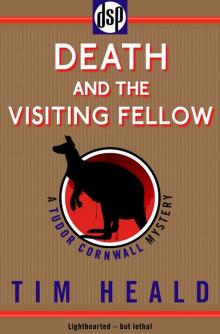 Death and the Visiting Fellow
Death and the Visiting Fellow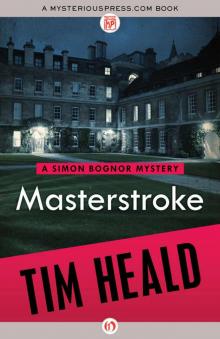 Masterstroke (The Simon Bognor Mysteries)
Masterstroke (The Simon Bognor Mysteries) Deadline (The Simon Bognor Mysteries)
Deadline (The Simon Bognor Mysteries)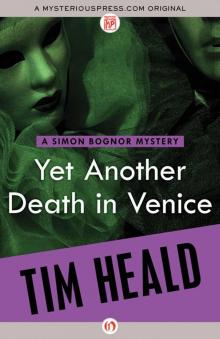 Yet Another Death in Venice (The Simon Bognor Mysteries)
Yet Another Death in Venice (The Simon Bognor Mysteries) Just Desserts (The Simon Bognor Mysteries)
Just Desserts (The Simon Bognor Mysteries)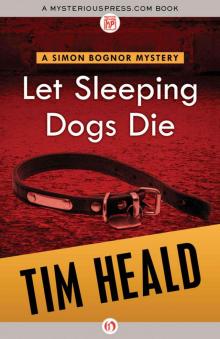 Let Sleeping Dogs Die (The Simon Bognor Mysteries)
Let Sleeping Dogs Die (The Simon Bognor Mysteries)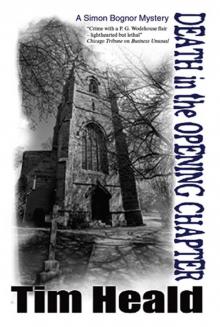 Death in the Opening Chapter
Death in the Opening Chapter Blue Blood Will Out (The Simon Bognor Mysteries)
Blue Blood Will Out (The Simon Bognor Mysteries)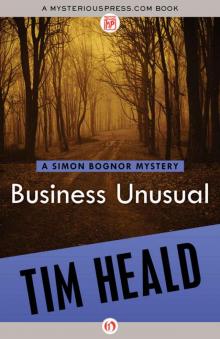 Business Unusual (The Simon Bognor Mysteries)
Business Unusual (The Simon Bognor Mysteries)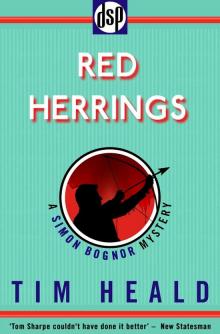 Red Herrings
Red Herrings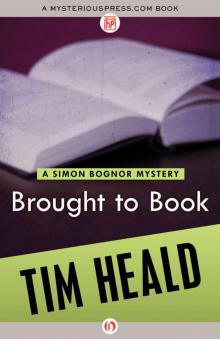 Brought to Book (The Simon Bognor Mysteries)
Brought to Book (The Simon Bognor Mysteries)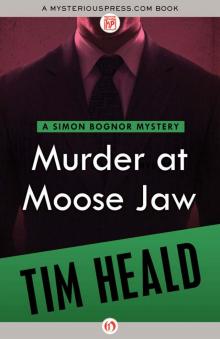 Murder at Moose Jaw (The Simon Bognor Mysteries)
Murder at Moose Jaw (The Simon Bognor Mysteries)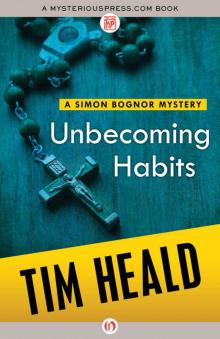 Unbecoming Habits (The Simon Bognor Mysteries Book 1)
Unbecoming Habits (The Simon Bognor Mysteries Book 1)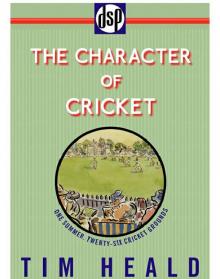 The Character of Cricket
The Character of Cricket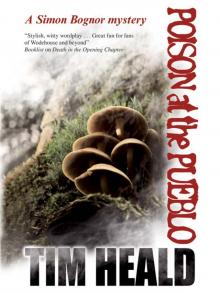 Poison At The Pueblo
Poison At The Pueblo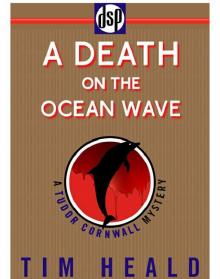 A Death on the Ocean Wave
A Death on the Ocean Wave